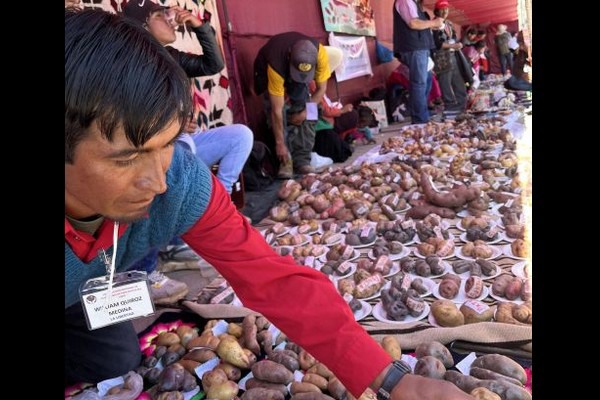High in the Andes Mountains in Peru, at the heart of the origins of the potato, hundreds of farming families preserve traditional landraces and, with these, nature's biodiversity.
Important work, for which they have received very little recognition or compensation for a very long time. Change has finally come. Since 2014, HZPC and the International Potato Centre (CIP) have been working directly with these farmers through the AGUAPAN Association. The goal is to preserve this genetic abundance and to improve the well-being of these farmers.
Biodiversity convention
In 1992, world leaders met for the first 'Earth Summit'. There, they signed the Convention on Biological Diversity. In it, they agreed to preserve biological diversity, to make sustainable use of this diversity, and to share the costs and benefits of biodiversity equitably amongst countries. Before 1992, gene banks were permitted to freely collect material. The Convention put an end to that. It was also agreed that the people from which the crops originate should be compensated. This includes the Peruvian farmers.
Too much distance between farms and farmers
Stef de Haan, researcher at the CIP for the Andean region, explains: 'In a special convention for agricultural crops, a ''Farmers' Rights'' clause was added in 2001. From that time on, farmers would receive financial compensation for the conservation of biodiversity. The intentions of these international politics were good, but, in practice, the compensation did not reach the farmers directly. The distance between the farms and farmers was literally and figuratively too great. The Indian farmers from the Andes often do not even know that such a thing as ''Farmers' Rights'' exists.'
Building bridges
For his research, Stef works extensively with local communities in the Andes. Acting as 'guardians', farmer families preserve as many as 50 to 300 old potato varieties each. Their living conditions are often substandard. There is a great deal of poverty, and they have only limited access to education and health care. Stef: 'In 2014, at a meeting of the Stichting Hoogland Indianen (SHI) [Highland Indians Foundation], I tried to bridge the gap between the private sector in the Netherlands and these farmers in the highlands of Peru. So that money from the sector would go directly to them. At that time, HZPC was the only company that wanted to participate.' With initial funding from HZPC, Stef was able to hire an anthropologist who speaks Quechua, the local language. She went to visit the farming families to see if they were actually growing these landraces. They managed, through these contacts, to organise a meeting to which they invited approximately 50 farmers. There, AGUAPAN was established, and an initial board was elected.
For more information: 
HZPC
Edisonweg 58501 XG
Joure, The Netherlands
Tel.: +31 (0)513 48 98 88
Email: [email protected]

